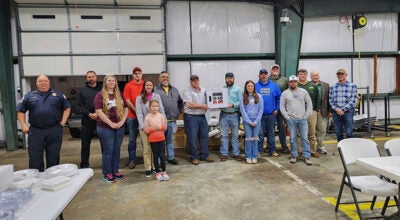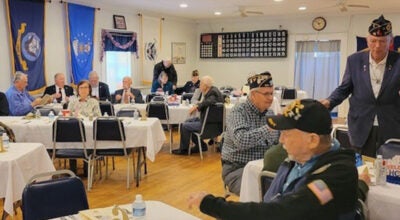There’s still time to be counted in Census
Published 8:24 pm Friday, September 25, 2020
|
Getting your Trinity Audio player ready...
|
So far, little more than half the population in each Western Tidewater locality — Southampton County, Isle of Wight County, Franklin and Suffolk — has responded to the 2020 Census.
According to the online progress tracker, the response rate as of Sept. 24 is:
- Isle of Wight – 73.4%
- Southampton County – 58.3%
- Franklin – 64.0%
- Suffolk – 67.1%
Latasha Chambers, a media specialist for the Census Bureau, said the counting is to stop on Sept. 30 and census takers are going door-to-door to contact people who haven’t responded by earlier requests via mail or other means.
“It is important that everyone complete the census as soon as possible online, by phone or by mail,” she added.
Chambers, whose district is in the Richmond, Virginia, Beckley Lane and Philadelphia region, stressed that the census, “provides a once-in-a-decade snapshot of what our country and state looks like — it provides a national and local population count, determines how many seats Virginia will have in Congress and it informs how much federal funding local communities will receive for public services.”
Further, “It also impacts services that many of us use every day such as schools, roads, bridges, hospitals, Medicare, Medicaid, SNAP, WIC and more.”
But getting full participation has its challenges. Many people object to being counted in such a way.
The spokeswoman said, “I can’t speak for census takers, but I have personally heard concerns about how census data are used and shared. They [the public] wonder if the questionnaire asks personal or invasive questions. Specifically, people have asked me if their responses are truly confidential and/or shared with ICE or law enforcement. Responses are confidential and are not shared with agencies listed above.”
She said the law requires the bureau to protect answers and keep them strictly confidential. Further, employees involved with the counting must swear to protect respondents’ personal information for life. “The answers provided are used only to produce statistics,” said Chambers. “The Census Bureau is not permitted to publicly release responses in any way that could identify you or anyone else in your home.
She pointed out that the census does not ask questions on citizenship, social security numbers or financial information.
To encourage participation, the bureau’s plan uses a variety of media, such as print advertising, radio and television, intended to reach 99% of households.
“Non-response follow-up, our door-to-door operation, will help increase participation as well,” said Chambers. “Also, we partner with local trusted voices in communities to help us reach historically hard-to-count populations.”
She gave these examples of such groups:
- Communities of Color. “There are a few reasons for varying low responses. Communities of color historically may not believe that their responses are kept confidential. We are sworn for life to protect census responses. We work with trusted partners and hire locally to help build trust.”
- Rural communities. “Rural communities often rely on P.O. Boxes. We do not send census questionnaires to P.O. Boxes because they cannot be matched to physical addresses. Census takers help us reach those people who live in rural areas and rely heavily on P.O. boxes.”
- Aging communities. “Aging communities may need assistance completing the census. Local partners and interest groups like AARP help ensure the elderly have the resources they need to participate.”
To view the response rate map, visit https://public.tableau.com/views/ResponseRateChallenge/CountyDashboard?:showVizHome=no&:tabs=n&State=Virginia&Select%20Mode=Total&Share




